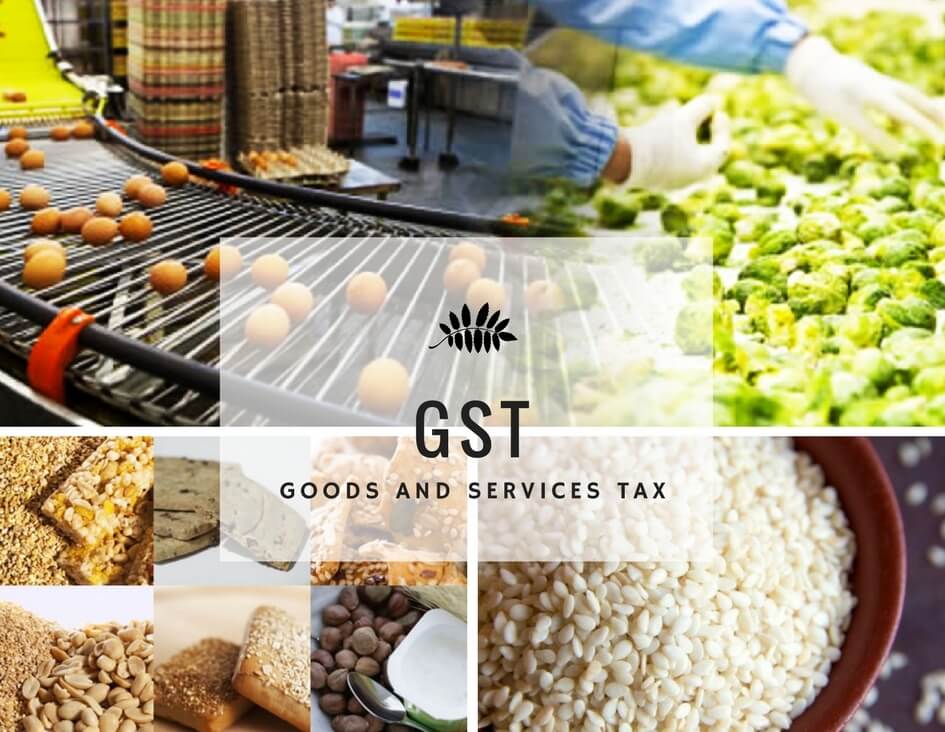The unified goods and services tax GST, is the most imperative tax reform that has been on cards for more than a decade. Principally, it is the same as the Value-added Tax (VAT) — already adopted by all Indian States — but with a wider base. While the VAT which substituted the sales tax was imposed only on goods, the GST is going to be a VAT on goods and services.
By subsuming an array of indirect taxes under one rubric, GST will tend to simplify tax administration, improve compliance and eliminate economic distortions in trade, production, and consumption. GST will also avoid cascading of taxes by taxing only the final customers & offering credit for taxes paid on inputs at every stage of the supply chain. More neutral in distribution, it will be curtailing the production costs & making exports more competitive.
The food-processing sector in India is currently plagued with concerns ranging from a decline in exports and infrastructure spending together with the burden of complying with a complex indirect taxation system. Multiple indirect tax legislations have led to significant compliance and administrative costs, classification and valuation disputes and generally impaired the ease of doing business in this sector. With the introduction of GST, the overall reduction of cascading effect of taxes, especially on the post-manufacture stage of the supply chain should have a positive effect on the cost of manufactured products in the hands of consumers. The GST structure following the destination principle shall treat the stock transfers to be supplies liable for taxation. Realization of GST in such cases will only occur on final supply. This would nevertheless result in cash flow blockages of the manufacturing entities.
GST being a consumption based tax will be levied only when food products are sold by the manufacturer and not when they are manufactured, unlike Excise Duty. The prices of agricultural products post GST will rise, nevertheless facilitating the movement of products via trucks in a better war primarily on account of the eradication of the octroi and entry taxes. The uniform tax mechanism will also empower the National Agricultural Market to merge the distinctive taxations levied on agricultural products.
Zero rating of exports under GST makes sure that Indian exports continue to be competitive in the international market. Inverted duty structure will subsequently follow as inputs or imports are taxed while exports are zero-rated leading to accumulation of the Input credit. The input credit so far generated is liable for the claim of refunds. GST will subject Imports to IGST (CGST + SGST) however ceasing the additional levy & exemptions. The domestic manufacturers vis-à-vis importers will notwithstanding get a level-playing field for their respective businesses.
After the GST implementation, exporters will be able to capitalize on the refunds and rebates from the taxes which will come under the ambit of state taxes (SGST). In the case of SEZ, the various exemptions provided under different schemes would be limited in their applicability to export duty only. The sale to domestic tariff area would be taxable, and the Exports or Deemed Exports would be all the more zero rated. Refunds would have to be claimed for accumulated ITC.
On the whole, the GST will ensure that the process of getting tax incentives is streamlined and made easier for the stakeholders. In addition, the GST is also likely to expedite the process of getting various refunds for exporters, thereby boosting the overall economy of the nation.
Sesame seeds processors & exporters, HL Agro looks forward to the proposed rationalization of tax structure and simplification of compliance procedures with the onset of GST in India.






